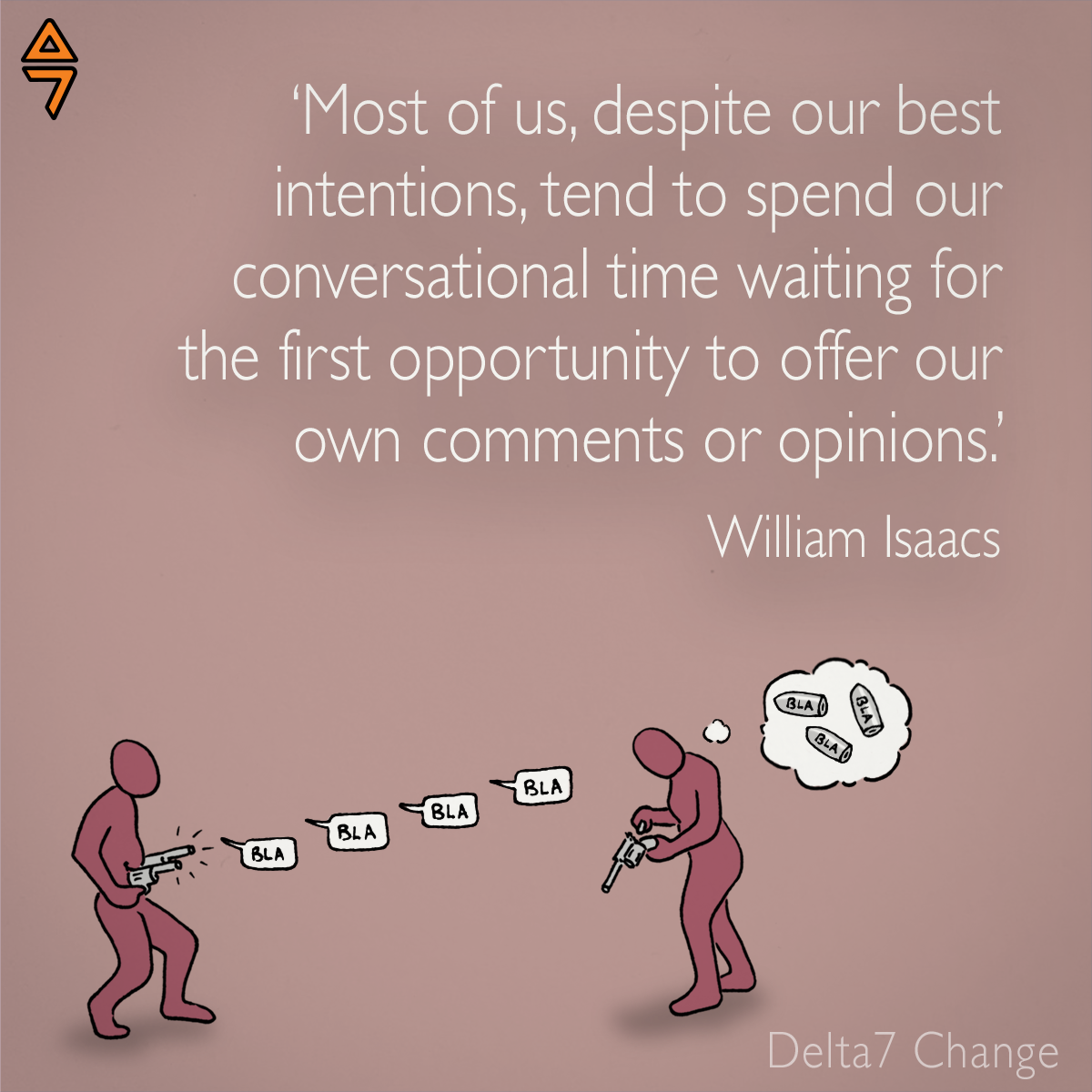Are you really listening?
julian burton
We believe change happens though conversations. Conversations require listening, which can lead to learning, mutual understanding and better relationships.
Hearing from different perspectives disrupts usual assumptions and encourages collaborative, creative thinking, which can lead to more considered solutions. Honest, candid dialogue can counter scepticism and resistance, building engagement and earning respect.
Listening requires being present, and it is all too easy to be distracted by background thoughts and considerations that may be running through our heads. Not least of these are issues concerning ego; that the direction of the conversation will be a reflection on our personal abilities, and therefore status. To demonstrate our abilities we want to make intelligent, ‘high value’ contributions, but it’s difficult to process lots of new information quickly so we tend to seize upon the things we can respond to confidently. If we try to anticipate where the conversation is going in order to prepare our response then we stop being curious - about the areas where we feel weak in order to capitalise on the parts where we feel strong. We can attempt to dominate the conversation so that there’s less new information to process and we can feel more in control, but by listening less we learn less.
Great conversations can be insightful and productive - and they require people to be curious and really listen to each other.









